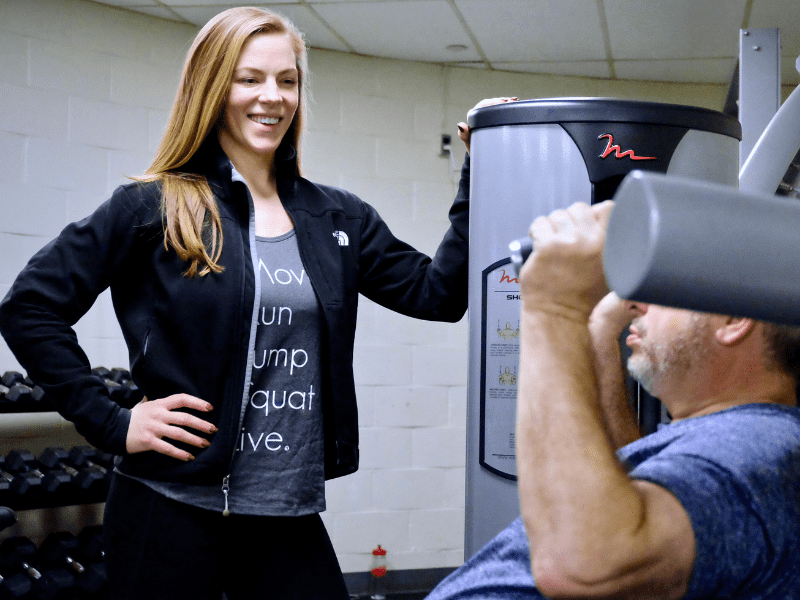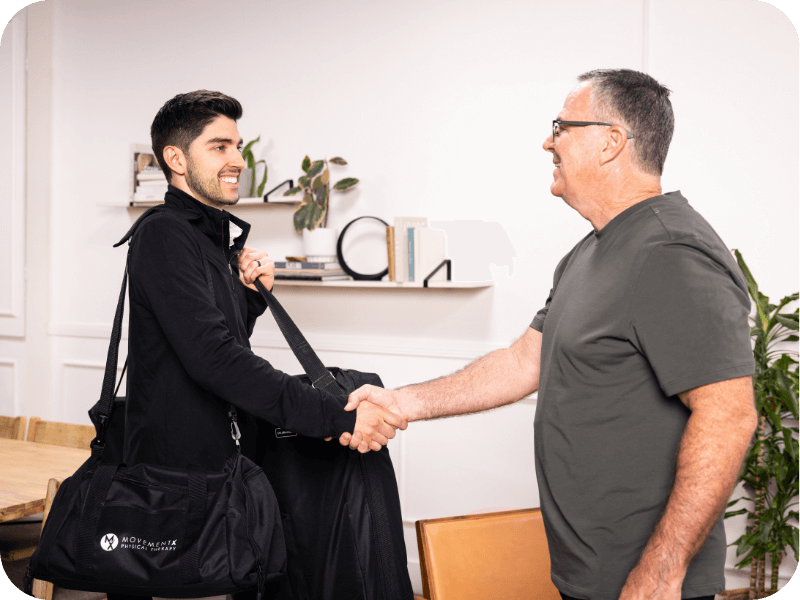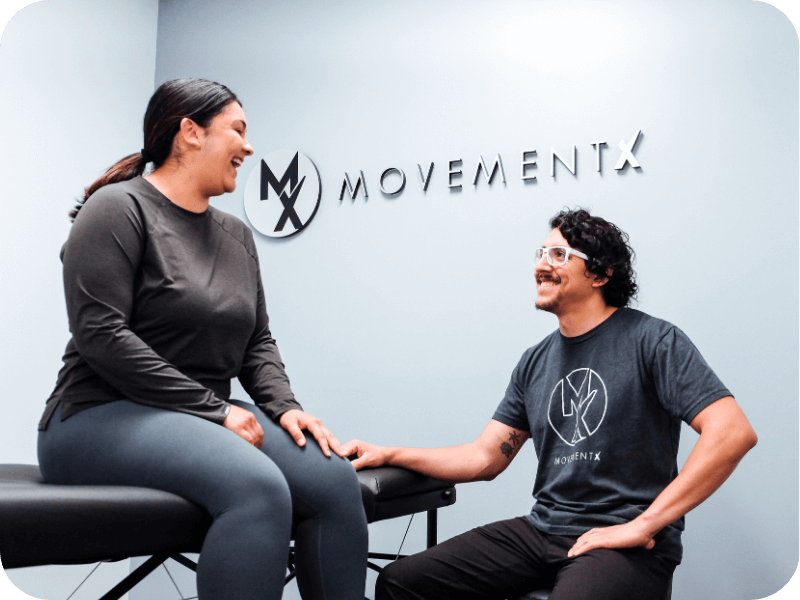As physical therapists and personal trainers, we use cues for exercises to achieve the best possible outcomes with our clients. These cues can help communicate safe and effective movement, and act as positive reinforcement while exercising.
We are trained to know what to look for when it comes to proper technique. However, effectively describing this to our clients in an understandable and actionable way can sometimes be challenging.
Here are 5 key ways you can improve your fitness cueing to optimize your connection, communication, and outcomes with clients.
The Importance of Cues
Effective fitness cues can help correct posture, optimize bodily movement, and improve muscle activation to help our clients stay safe and get the most out of their exercises.
Hopefully, we’re using movement and fitness cues in every session to help optimize movement mechanics, prevent injury, activate key muscles, and teach proper technique—but sometimes it’s not always clear to our clients what exactly we’re asking them to do.
Communication Is Key
As personal trainers and physical therapists, it’s our job to guide clients through movements and exercises in a way that speaks to their specific needs, learning styles, and movement goals. Tailoring your fitness cues to each client’s particular needs can mean the difference between success and struggle.

1. Choose Your Words With Intention
How you describe even the smallest adjustments can make all the difference. Choosing directional and actionable phrases can create a strong mental target that’s easier to follow than vague fitness cues like “brace your core” or “activate your glutes.”
Don’t be afraid to get creative with how you phrase your positive fitness cues. For Example, instead of saying “stretch your arms overhead,” you might try “reach up to touch the sky/ceiling.” Some clients might need a more detailed visual description, while others respond better to explanations of how movements should feel.
2. Keep It Simple
Your client might be a workout enthusiast and have a great foundational knowledge of fitness vocabulary and/or muscle groups, but it’s also possible they have no background in fitness and are unfamiliar with certain fundamental exercises.
Therefore, keep it simple! Phrasing exercise cues doesn’t have to be complicated. Keep it concise, and avoid any over-complicated technical language.
3. Start At the Bottom
Clients can sometimes perform exercises incorrectly—and that’s okay! Adjustments are part of the process.
When there are multiple corrections to be made, it can feel like you’re taking two steps forward and one step back. For example, you start with adjusting their knees and then move on to their foot positioning, but after getting their feet positioned, their knees require correcting again.
Try starting from the base of support and working your way up. This allows you to correct one step at a time, with no need for re-cueing alignment again and again.
4. Work Backwards
Have you ever given a client a cue to “relax the shoulders,” only for them to stay in the exact same position? Instead of repeating the cue, try cueing them to do the opposite. By asking this client to “shrug the shoulders,” quickly followed by, “now, pull them down/away from your ears.” Here you’re giving them room to feel the difference in the movement you’re looking for.
5. Activate Mind-Muscle Connection
An option for clients who are struggling to find direct intention with their movements is to tap into their mind-muscle connection with tactile cueing. If the client gives you permission, you can touch the muscle you want them to engage. Even better, you can have them touch the muscle you want them to engage! With this tactile cue, you’re helping the brain and body make a connection between cues and desired movements or feelings.

Examples of Bad, Better, & Best Cueing
Using the cueing strategies listed above will increase your likelihood of effectively communicating with your clients. Your goal should be to give great cues to every client, tailoring your phrasing and suggestions to each client’s movement goals.
Here are some examples of bad, better, and best positive fitness cues for common movements…
Example #1
BAD: “Brace your core”
BETTER: “Draw your belly button in”
BEST: “Blow out an imaginary candle while holding your plank”
A simple cue used by a variety of fitness professionals, asking your clients to “brace” their core might seem simple enough, but for many, this request can be confusing and often result in poor techniques that leave them vulnerable to injury. To break this cycle of unsafe form, try communicating cues in a unique way that targets the result you’re looking for, not the action.
Example #2
BAD: “Strengthen your back”
BETTER: “Bring your shoulder blades together”
BEST: “Imagine squeezing a tennis ball between the base of your shoulder blades”
How often have you used the fitness cue of “bring your shoulder blades together” in order to activate their back muscles and improve their posture, but instead, they respond by shrugging their shoulders. Try giving an external focus where they can conceptualize the intended action more effectively.
Conclusion
Incorporating more mindful fitness cues into your sessions can be a game changer. You may discover how using stronger communication with clients can lead to better movements and more powerful connections!
At MovementX, we want to empower you to empower your patients. Our nationwide team of passionate providers is fueled by a culture of shared success, strong referral networks, and custom-built technology.
Learn more about MovementX and elevate your physical therapy career.
About the Author
Meredith Black is a registered nurse, personal trainer, and wellness advocate with MovementX in Arlington, VA. Meredith is a graduate from Virginia Tech with a BS in Psychology and from VCU with a BS in Nursing. She specializes in sports and functional training to help her clients live healthier, stronger, more active lives. Meredith is also the lead instructor for AgeProof Your Body.
Share This Page
Related Resources
Found this page interesting? Discover more insightful resources below.









